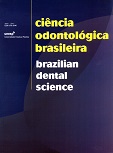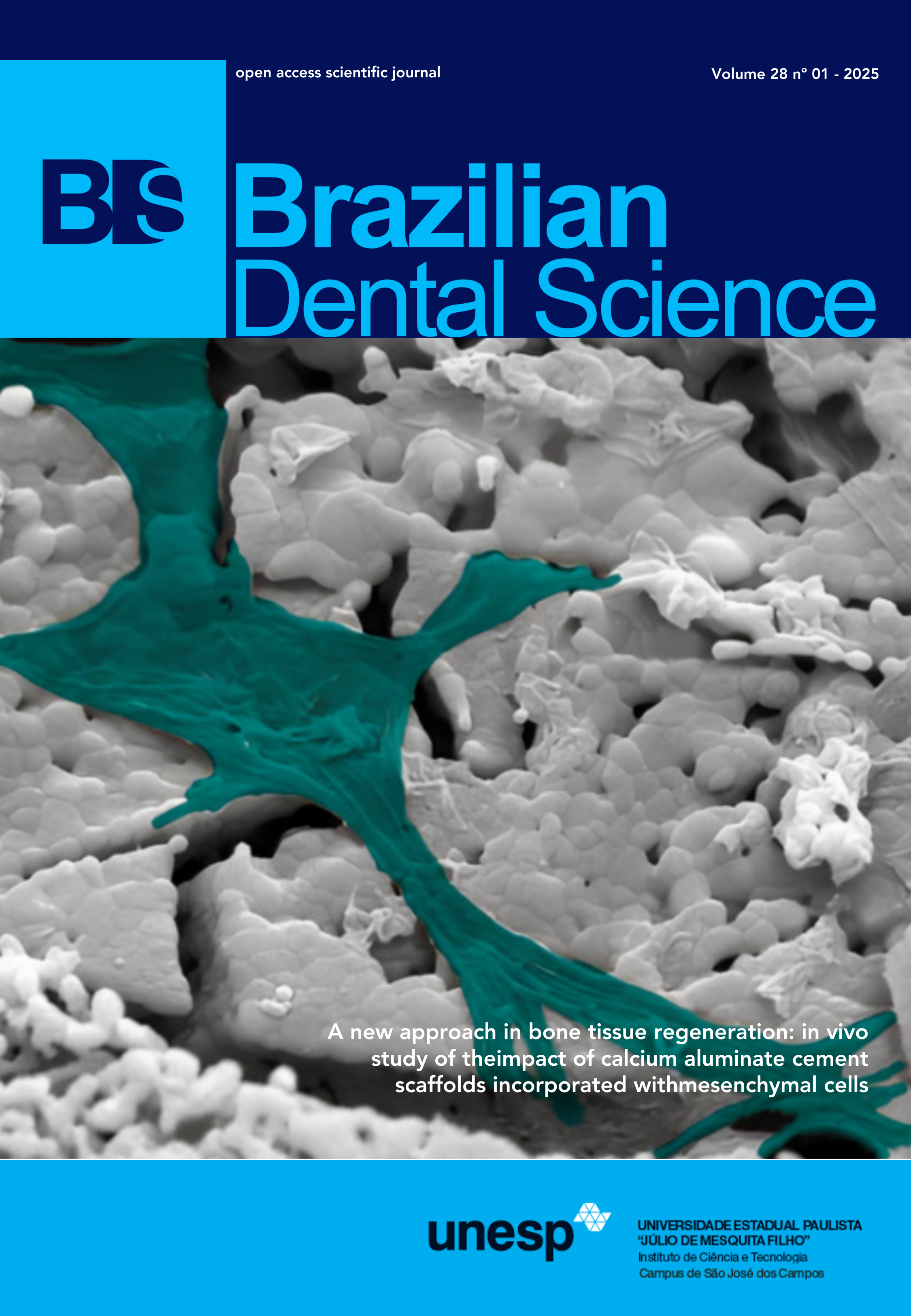Effect of caries infiltration technique and fluoride therapy on the bond strength of the demineralized enamel
DOI:
https://doi.org/10.14295/bds.2012.v15i3.828Abstract
Different techniques are employed to control de caries progression, such as fluoride remineralization and resin infiltration (ICON®). However, the interference of these techniques on further adhesive procedures on the treated tissue is still controversial. The aim of this study was to evaluate the bond strength (BS) of the bovine enamel demineralized and treated with either fluoride or ICON®. Material and Methods: The tooth fragments were randomly divided into 4 groups: Group Sound samples (control); Group Demineralized samples (DS); Group Remineralized samples (NaF- 0.05% /8 weeks); Group ICON® samples. The samples were etched and next, a total etch bonding system was applied followed by resin composite. Then, they were submitted to microtensile test in a universal testing machine (10 Kg 1 mm/min). Results: Data were evaluated by ANOVA. There were statistically significant differences among groups (p = 0.28), with the following mean values (MPa): Group: Sound samples ((20,20 ± 2,97), Group: Demineralized Samples (21.99 ± 4.25), Group: Remineralized Samples (23.48 ± 4.03), Group: ICON® samples (22.10 ± 3,37). Conclusion: The treatments did not interfere in bond strength of the composite resin to enamel, providing values similar to those of the control group.
Downloads
Downloads
Published
How to Cite
Issue
Section
License
Brazilian Dental Science uses the Creative Commons (CC-BY 4.0) license, thus preserving the integrity of articles in an open access environment. The journal allows the author to retain publishing rights without restrictions.
=================
COPYRIGHT TRANSFER AND RESPONSIBILITY STATEMENT
(PDF)
For all articles published in the BDS journal, copyright is retained by the authors. Articles are licensed under an open-access Creative Commons CC BY 4.0 license, meaning that anyone may download and read the paper for free. In addition, the article may be reused and quoted, provided that the original published version is cited. These conditions allow for maximum use and exposure of the work while ensuring that the authors receive proper credit. All metadata associated with published articles is released under the Creative Commons CC0 Universal Public Domain Dedication.
Before the submission, authors must obtain permission to reproduce any published material (figures, schemes, tables, or any extract of a text) that does not fall into the public domain or for which they do not hold the copyright. Permission should be requested by the authors from the copyright holder (usually the Publisher, please refer to the imprint of the individual publications to identify the copyright holder).
The authors hereby attest that the study is original and does not present manipulated data, fraud, or plagiarism. All names listed made a significant scientific contribution to the study, are aware of the presented data, and agree with the final version of the manuscript. They assume complete responsibility for the ethical aspects of the study.
This text must be printed and signed by all authors. The scanned version should be submitted as supplemental file during the submission process.



